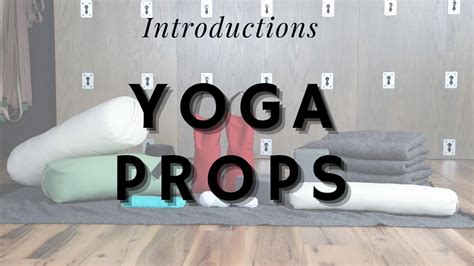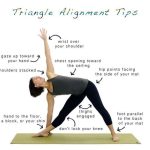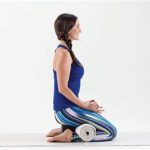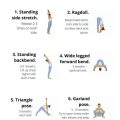Essential Yoga Props for Beginners: A Comprehensive Guide for Support and Enhancement
Yoga can be an incredibly fulfilling practice, offering numerous physical and mental benefits. However, for beginners, it can often be intimidating or difficult due to unfamiliar poses or physical limitations. Fortunately, yoga props are available to make the practice more accessible, comfortable, and effective. This article explores the essential yoga props for beginners, offering practical tips and detailed insights on how to use them effectively to enhance your yoga journey.
Introduction
For those new to yoga, incorporating props into your practice can help create a more accessible and enjoyable experience. Props can enhance your poses, provide extra support, and ensure alignment—helping both beginners and experienced practitioners deepen their practice. But what exactly are yoga props, and how can they benefit beginners? In this guide, we’ll break down the essentials, why they’re important, and how you can use them in a way that improves your yoga experience, whether you are practicing at home or in a studio.
Key Concepts
- Support: Yoga props help support the body in poses where flexibility, strength, or balance might be challenging for a beginner.
- Alignment: They help beginners achieve proper alignment, ensuring safety and maximizing the benefits of each pose.
- Modification: Props allow modifications of difficult poses so that beginners can practice with ease, reducing strain or injury risk.
- Comfort: By adding comfort, especially in seated or floor-based poses, props encourage relaxation and prolonged holding of poses.
Historical Context
The use of props in yoga, particularly as introduced by modern yoga masters like B.K.S. Iyengar, dates back to the mid-20th century. Iyengar’s method emphasized precision in alignment and posture, and props became a valuable tool for making advanced poses accessible to all. By democratizing yoga, Iyengar allowed people of all physical abilities to experience its benefits. Over time, yoga props evolved from simple household items to specially designed equipment widely used in studios today.
Current State Analysis
Today, yoga props have become an integral part of many yoga practices, especially in beginner and restorative classes. With the growing popularity of yoga worldwide, many manufacturers now produce a variety of props tailored to different needs, materials, and preferences. From eco-friendly cork blocks to plush yoga blankets, there is a wide selection of props available in the market, each serving unique functions. However, the increasing number of choices can sometimes be overwhelming for beginners, which is why understanding their core uses and benefits is crucial.
Practical Applications
For beginners, knowing how and when to use props can be a game-changer. Below is a list of key yoga props and their most common uses.
- Yoga Blocks: Blocks provide height and support, helping with balance and alignment. For example, in a standing forward fold (Uttanasana), placing blocks under the hands can reduce strain on the lower back.
- Yoga Straps: Straps can help beginners with flexibility, particularly in poses where the hands are meant to reach the feet, such as seated forward bends (Paschimottanasana).
- Yoga Bolsters: Bolsters offer support in restorative poses, such as supported bridge pose (Setu Bandha Sarvangasana) or child’s pose (Balasana), by providing gentle elevation and relaxation.
- Yoga Blankets: Blankets add extra cushioning and comfort, especially for seated poses or under the knees during kneeling poses.
- Yoga Wheels: These can assist with backbends, providing both support and a gentle stretch to the spine, as well as helping with balance.
Case Studies
Let’s take a closer look at how yoga props have made a significant difference for beginners in various scenarios.
| Yoga Pose | Prop Used | Before Using Prop | After Using Prop |
|---|---|---|---|
| Trikonasana (Triangle Pose) | Yoga Block | Difficulty reaching the floor, improper alignment | Enhanced alignment, better balance, ease in holding pose |
| Paschimottanasana (Seated Forward Fold) | Yoga Strap | Inability to reach toes, discomfort in lower back | Improved flexibility over time, reduced strain, enhanced reach |
| Setu Bandha Sarvangasana (Bridge Pose) | Yoga Bolster | Difficulty holding pose, discomfort in lower back | Increased support, better relaxation, longer hold time |
Stakeholder Analysis
The use of yoga props affects several key stakeholders, including yoga practitioners, instructors, and manufacturers.
- Beginners: For beginners, props help reduce the risk of injury and make yoga more accessible.
- Instructors: Yoga teachers benefit from using props to safely guide students through poses, especially in classes with varying skill levels.
- Manufacturers: Companies producing yoga props cater to a growing market, offering eco-friendly options and innovative designs.
Implementation Guidelines
To effectively incorporate yoga props into your practice, follow these guidelines:
- Identify Your Needs: Determine which poses challenge you the most and choose props accordingly. For example, if flexibility is an issue, start with a yoga strap and block.
- Learn Proper Usage: Attend a beginner class or watch online tutorials to learn how to properly use props for specific poses.
- Be Consistent: Use props regularly to build strength and flexibility over time, eventually progressing toward practicing without them.
- Modify and Adjust: Don’t hesitate to modify poses with props based on your body’s unique needs, ensuring safety and comfort.
Ethical Considerations
As yoga props become more commercially available, there are important ethical considerations to bear in mind. The production of eco-friendly props, such as cork blocks and recycled yoga mats, supports sustainability, reducing the environmental impact of yoga equipment. Moreover, ensuring that props are accessible and affordable for a wider audience contributes to the inclusivity of yoga, preventing it from becoming an elitist practice.
Limitations and Future Research
While yoga props offer significant benefits, there are some limitations. Over-reliance on props might inhibit the natural development of strength and flexibility. Moreover, the high cost of premium yoga props can be a barrier for some beginners. Future research could explore cost-effective alternatives or develop innovations that balance affordability, sustainability, and functionality. Another area worth exploring is the psychological impact of props—how they affect beginners’ confidence and long-term commitment to yoga.
Expert Commentary
Yoga props have undoubtedly revolutionized the practice for beginners, offering support, comfort, and increased accessibility. They are invaluable tools for enhancing the learning experience and encouraging proper alignment, balance, and flexibility. However, experts emphasize the importance of gradually weaning off props to ensure natural development in the practice. As yoga continues to evolve, the role of props will remain central, but the challenge lies in balancing their benefits with fostering independence in the practitioner.








